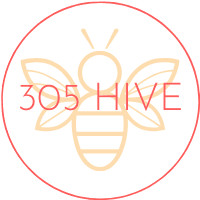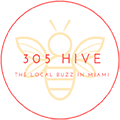As part of retinitis pigmentosa month, I want to encourage all individuals affected by vision loss to have hope and confidence that they can lead a productive life.
As a successful executive at one of our major institutions of higher education, toward the end of my 20-year career I learned I had most likely developed retinitis pigmentosa, an eye disease that in all probability would result in total blindness. The first person I phoned was my mother. Looking back, I ask myself “How was I able to cope with this diagnosis?” I wonder sometimes if it was the reaction my mother had when she responded to my initial phone call telling her of the diagnosis. I said, “Mother, I just got my diagnosis, and I am going to go totally blind!” She responded in her very pragmatic style, “Well, I will just have to pray that you then do big things for the blind!” I know that at the time, quite frankly, she annoyed me because I expected some pity, some sadness, or maybe even some motherly love. Looking back, what she was saying was, “I have confidence in you, and you will learn about blindness and then help others.” This was the best thing she could have said because it made me proactive, and I did not waste any time figuring out what I needed to do. I learned that the Miami Lighthouse for the Blind and Visually Impaired was a founder of the University of Miami Bascom Palmer Eye Institute where my ophthalmologist was on the faculty. I also learned that the Miami Lighthouse was the first private agency in the U.S. to rehabilitate blind adults for competitive mainstream employment, so it seemed reasonable that I enroll as a client.
As soon as I could wrap up crucial university business and identify my interim replacement, I began a four-month rehabilitation program at Miami Lighthouse for the Blind. During this period I lost all of my vision except for light perception. At Miami Lighthouse I learned personal management, which gave me the training I needed for my independent living skills such as grooming including putting on my makeup, cooking, writing checks, addressing envelopes, telephone skills, and shopping. I learned how to use all Microsoft Office applications with supplemental screen-reading software called JAWS. My physical adjustment to blindness required that I learn how to use the white cane. One-on-one Orientation and Mobility classes involved learning how to safely take the stairs and cross busy intersections, walk down the sidewalk to the park and take public transportation without the assistance of a sighted guide. Going to these classes, I met others who were successful despite having lost their eye sight, and this interaction motivated me to be the very best blind person I could be. At the end of my program, when I was told, “You would be a great guide dog user,” I was shocked. That was not on my radar; however, I traveled to New York and went to an accredited guide dog school, Guiding Eyes for the Blind, lived there for nearly a month and returned to Miami with my first guide dog. I had no idea how the orientation and mobility instruction I received at Miami Lighthouse would enable me to travel safely with a guide dog, including traveling to France and throughout the U.S.
Now as President and CEO of the Miami Lighthouse for the Blind, I use the executive experience I gained in my sighted career; this is not a change for me. However, access to information is quite different. I read through my computer or use other innovative technology like the OrCam. This is a pair of glasses with a tiny camera mounted on the front and a small
CPU with a few buttons that enable me to have it read text on a page or identify faces. I have, in essence, trained the computer for face recognition of my colleagues and acquaintances. I use an iPhone, like everyone else, but the setting of “voice over” enables me to get auditory feedback instead of reading the phone screen. Recent technology innovations like these help the blind be independent users, and with such technology the blind have access to information that enables them to read, to use an iPhone, to use a computer and with vision rehabilitation education to get mainstream, competitive employment; however, all of these skills require training on specific devices.
Center-based training, like that offered at Miami Lighthouse, on independent living skills, computer use, orientation and mobility and more enables the blind to meet others who have achieved excellent independent living skills.
While this relates to my personal response to blindness, for many that lose their eyesight, who are not born blind, my adjustment to blindness was a personal journey, and for each person the adjustment time and the social, emotional and cognitive process is different. What is noteworthy for me is the importance of the blind having a purpose, a destination and a community. My success as one of the few blind Chief Executive Officers leading a major vision rehabilitation institution was made possible by the vision rehabilitation and technology training I received at Miami Lighthouse.
Although the average of diagnosis of retinitis pigmentosa is 35.1 years of age, it can occur in early childhood, and the incidence increases with age. [From JAMAophthalomology, “Age at Onset Curves of Retinitis Pigmentosa,” March 1, 2008, link: https://jamanetwork.com/journals/jamaophthalmology/fullarticle/484342] Because blindness can occur at any stage of life ranging from babies who are born blind to seniors who develop age-related vision loss, Miami Lighthouse offers training programs for all ages. It is crucial for children and adults with vision loss to seek vision rehabilitation services in order to lead independent and productive lives. While retinitis pigmentosa has taken my ability to see, the training I received at Miami Lighthouse enables me to firmly believe our motto: “It’s possible to see without sight™.”
Virginia A. Jacko, President and CEO
Miami Lighthouse for the Blind and Visually Impaired www.miamilighthouse.org



